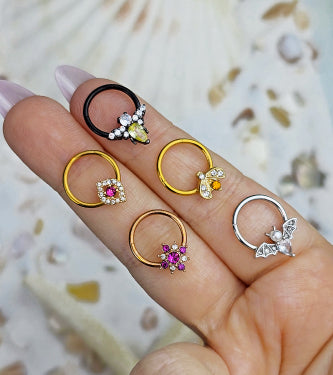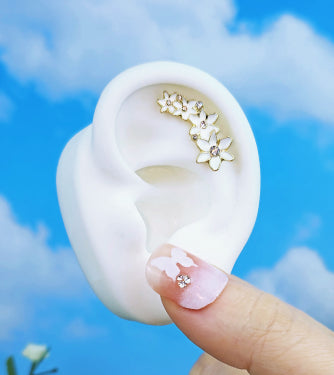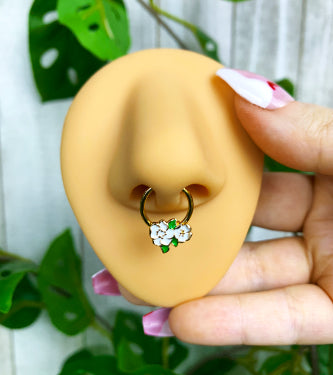Answering your piercing questions (part 4)
Q: Ok so, dumb question but I totally don't get the whole gauge system. Can you explain how that works? -Sam
A: First of all, there are no stupid questions. If nobody asked questions for fear of sounding stupid, then nobody would ever learn anything. Now THAT would be a stupid situation! As far as the gauge system is concerned, the higher the number means the thinner the diameter of the part of the jewelry that actually goes into your piercing. This means that 20 Gauge jewelry is going to be visibly thinner than 14 Gauge jewelry. If you were looking at a captive bead ring, it wouldn’t be the size of the space in the center, it would be the thickness of the actual ring itself. Gauge can also be converted into millimeters or fractions of an inch. This is most common in jewelry for stretched piercings but can be seen in other jewelry as well. For example, 2 Gauge is 6mm, which is also a ¼ of an inch. The best way to measure the gauge of your jewelry is to use a pair of digital calipers but your trusted piercer can also help you determine the size of your jewelry or the size of your piercing.
Q: I can't have piercings at work, but I love the look of them and I'm really itching to get one. What piercings are easiest to hide while I'm at work? -Shauna
A: The easiest piercings to hide are ones you wouldn’t normally see in a work environment. That means piercings like your navel or nipples. However, if you want a piercing that you can still show off in your off hours, the septum is easily the one that’s easiest to conceal. If you get pierced with horseshoe-style jewelry, you can simply flip the jewelry up so that it’s inside your nose. Also, depending on whether you are hiding them for dress code reasons or safety/hygiene reasons, ear cartilage piercings are generally less likely to get noticed. Just try to stick with smaller, less noticeable jewelry ends such as tiny ball ends or flat disc ends.
Q: I just got my nipples pierced and I’m totally in love with them! I know I can’t change the jewelry until they’re totally healed but, in the meantime, I want to start shopping!! What kind of jewelry can I wear in them? -Ruby
A: Nipple piercings are one of the greatest piercings if you like to change your jewelry because you can rock virtually ANY style of jewelry. So long as you make sure that it’s the right gauge and the correct length/diameter, there is almost nothing that you can’t wear. Straight barbells are always a classic and you can always go with dangle jewelry that is supported by a straight barbell. You can also do circular jewelry with captive bead rings being the classic look or hinged segment rings for a look that’s a bit simpler to change on your own. (Of course, you can always get a captive ring opener and make those a whole lot easier to change!) Both of those also come in dangle versions and there’s even the captive charm ring instead of a captive bead ring. And let’s not forget horseshoes, for a look that splits the difference between dangle and not-dangle. Finally, there’s nipple shields which may not work for everyday wear but holy cow, do they make a statement! When you come down to it, the only jewelry you can NOT wear in nipple piercings would be curved barbells, spiral barbells, seamless closure rings (more of a comfort issue in nipple piercings), and certain styles of clicker, also for comfort’s sake.
Welcome to BodyCandy.com, a small, family-owned business that has been offering high-quality, affordable jewelry since 2002. We take pride in crafting unique pieces that cater to every style, from navel rings to septum rings to faux piercing jewelry, all designed with care and attention to detail. As a close-knit team, we design much of our jewelry in-house, ensuring that each item meets our high standards of craftsmanship and durability. Whether you're looking for something bold, subtle, or custom-made, BodyCandy is dedicated to providing exceptional jewelry that doesn’t break the bank. Thank you for choosing us as your go-to destination for all things jewelry!



